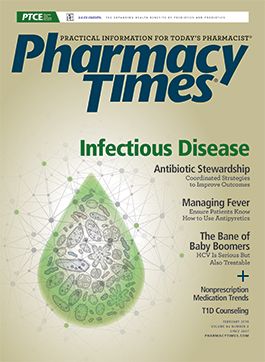Publication
Article
Pharmacy Times
Are Opioids Our Only Drug Problem?
Author(s):
Virtually all the media coverage of the national drug problem revolves around prescription opioids or the clandestine version of carfentanil and fentanyl.
Virtually all the media coverage of the national drug problem revolves around prescription opioids or the clandestine version of carfentanil and fentanyl. There has been good reason for this massive coverage, as we are in the midst of the biggest drug epidemic in our history. Thousands are dying from overdoses of prescription opioids and their illicit counterparts, and despite the efforts of law enforcement, prevention, and rehabilitation, the scourge continues.
But in the meantime, other drugs continue to cause deaths, with alcohol and tobacco certainly at the top of the list, though their legality seems to give them a pass. Any discussion of banning either one, especially alcohol, causes a huge outcry and reminders of what happened during Prohibition. So we remove tobacco products from store shelves yet freely sell alcohol, the drug that has caused the deaths of vast numbers of innocent individuals.
Meanwhile, as the opioid crisis flourishes, there is another group of prescription drugs flying under the radar that is also responsible for many deaths. Benzodiazepines have a long history of being used by prescribers and dispensed by pharmacists for many diagnoses. These include legitimate uses as treatment for anxiety, insomnia, and other problems, but there is still a strong potential for abuse.
Alprazolam, with its quick onset, has long been the No. 1 drug in this category for abusers. It acts faster than diazepam, giving drug seekers a better and quicker high. Decades ago, diazepam held that distinction in the drug abuse world, but alprazolam is much preferred, if available, today. It has been widely discussed and made an icon of the entertainment world because of its effects on the human body.
Alprazolam abuse can reach 30 pills a day for the most hardened abusers, with street prices of $3 to $4 a pill, depending on the strength. Brand and generic price differences no longer exist, as generics dominate prescriptions and are, of course, cheaper.
Benzodiazepines are notoriously used in conjunction with other abused drugs. Evidence of these is commonly found in drug blood levels, along with alcohol and opioids, by coroners performing autopsies. With these drug cocktails, it is sometimes difficult for coroners to determine which specific drug was the cause of death or whether all the drugs in tandem proved fatal.
One classic diversion story involving benzodiazepines is about a man who used his small dog to obtain diazepam, claiming that this drug alone alleviated the pet’s high levels of anxiety. He doctor-shopped 5 veterinarians to get this drug and feed his own addiction. We arrested him once, but he then used the same tactic with 5 other vets before we arrested him a second time and the fraud stopped.
Another drug class that should be mentioned is stimulants, such as clandestine methamphetamine. The resurgence of crystal meth over the past few years by Mexican drug cartels has quietly killed Americans, yet we focus almost entirely on opioids. Years ago, meth was manufactured in small or large labs, often fueled by farm chemicals. Still in use are “one pots,” a method of making meth in 2-liter soda pop bottles.
Stimulant pharmaceuticals designed for attention-deficit/hyperactivity disorder are also being abused, often by the parents of children who have received this diagnosis. A common scenario is that parents decide that their child does not need the drug every day or when school is out during the summer. This provides the adults with a drug that they used in college to improve their study habits, and they liked the way it made them feel.
Last but not least is cocaine, which is becoming popular again. Reportedly, the inner city is the biggest consumer of cocaine, as we see bigger and bigger law enforcement seizures of this powder of death. Getting a handle on cocaine abuse is crucial, because we all know the problems that this drug and its close cousin, crack, caused in many neighborhoods.
In conclusion, yes, opioid abuse is a true crisis, but we can’t ignore other drugs that are abused and the negative impact on our citizenry. As I have said before, the problem is complex, and it takes a multitude of organizations to reduce the abuse.
Cmdr John Burke is a 40-year veteran of law enforcement and the past president of the National Association of Drug Diversion Investigators. He can be reached by e-mail at [email protected] or via rxdiversion.com.

Newsletter
Stay informed on drug updates, treatment guidelines, and pharmacy practice trends—subscribe to Pharmacy Times for weekly clinical insights.






